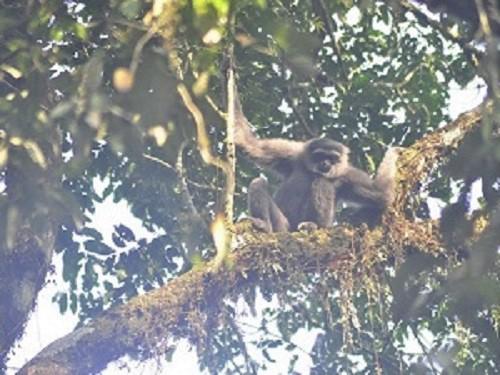Rahayu Oktaviani
(a) To identify habitat preference of Javan gibbon
(b) To establish accurate map of spatial distribution of Javan gibbon and provide an overview threats that Javan gibbons facing across the landscape.

As Endangered species (IUCN 2008) with ~2,500 adults remaining in >20 habitat fragments, Javan gibbons are endemic to western and central parts of Java, Indonesia, one of the most densely populated islands on earth. Deforestation and habitat degradation are primary threats to the existence of Javan gibbons. Gunung Halimun-Salak National Park (GHSNP) as the largest remaining forest block in Java is believed to contain the largest javan gibbons population on Java. Many studies have been conducted in GHSNP but most of the studies are focused on the behavioral aspects of javan gibbons. The last study that has conducted was by Iskandar (2006) about the population estimates and there is no recent data about javan gibbons' distribution in this site since then. Distribution is one of the two crucial parameters for determining conservation status for a species (IUCN 2001) and understanding the complex relationship between javan gibbons and their habitats is essential for effective conservation plans. As we get to know about javan gibbons' distribution and their habitat preference, it will be useful to apply the result of study to establish effective conservation management program.

Distribution survey will be conducted through field exploration method in 10 resorts of GHSNP as the representative areas. In each resort, we will collect information about the presence of javan gibbon through previous studies if available and also through interview with the locals. Based on this information, we will check the sites and collect data through forest walks. We also will explore some potential area around the resort where never been explore which indicate as possible habitat for javan gibbons. The duration of field visits depend on accessibility and whether or not the presence of javan gibbon is confirm. We also will collect data on threats to habitat in areas where this species occurs. The javan gibbons habitat suitability will be determined through modeling analysis method. Data will be analyze statistically using maximum entropy (MaxEnt) method from Geographic Information System (GIS) software to produce habitat suitability map of javan gibbon in GHSNP. As the output, habitat suitability map for javan gibbons will be divided into three classes: high, moderate and low suitability. To evaluate the validation, javan gibbon distribution data will be compared with habitat suitability map.